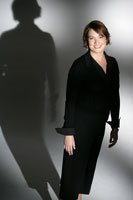Zen Powder Room is also Eco-friendly

We recently completed this powder room in one of our projects- a remodel in Scottsdale of an early 90's semi-custom home. The owner wanted aspects of a Zen aesthetic, with the quiet, soothing sounds of water running to be incorporated into the home somewhere. The powder room was a logical choice for both. We worked with Concrete Interior Design here in Scottsdale to create this unique vanity and water-feature combination.
The entire vanity is designed and constructed of colored concrete, which is made from recycled and eco-friendly materials. Incorporated into the upper shelf is a hidden motion-sensitive eye that operates the "faucet" - a row of individual water streams trickling down into a pebble filled basin. The effect is a unique blend of fountain and function. The design of the faucet feature conserves water with its low-pressure streams and automatic shut-off. Behind the flowing water, a mosaic blend of glass and man-made tiles provides a bit of color and sparkle.
The pebble-like texture of the glass sconces harmonizes with the Zen theme, and repeats the texture of the actual stones in the sink basin. Soft, glowing faux finished walls are the perfect backdrop for pops of bright red accents and tie into the rest of the home.


















